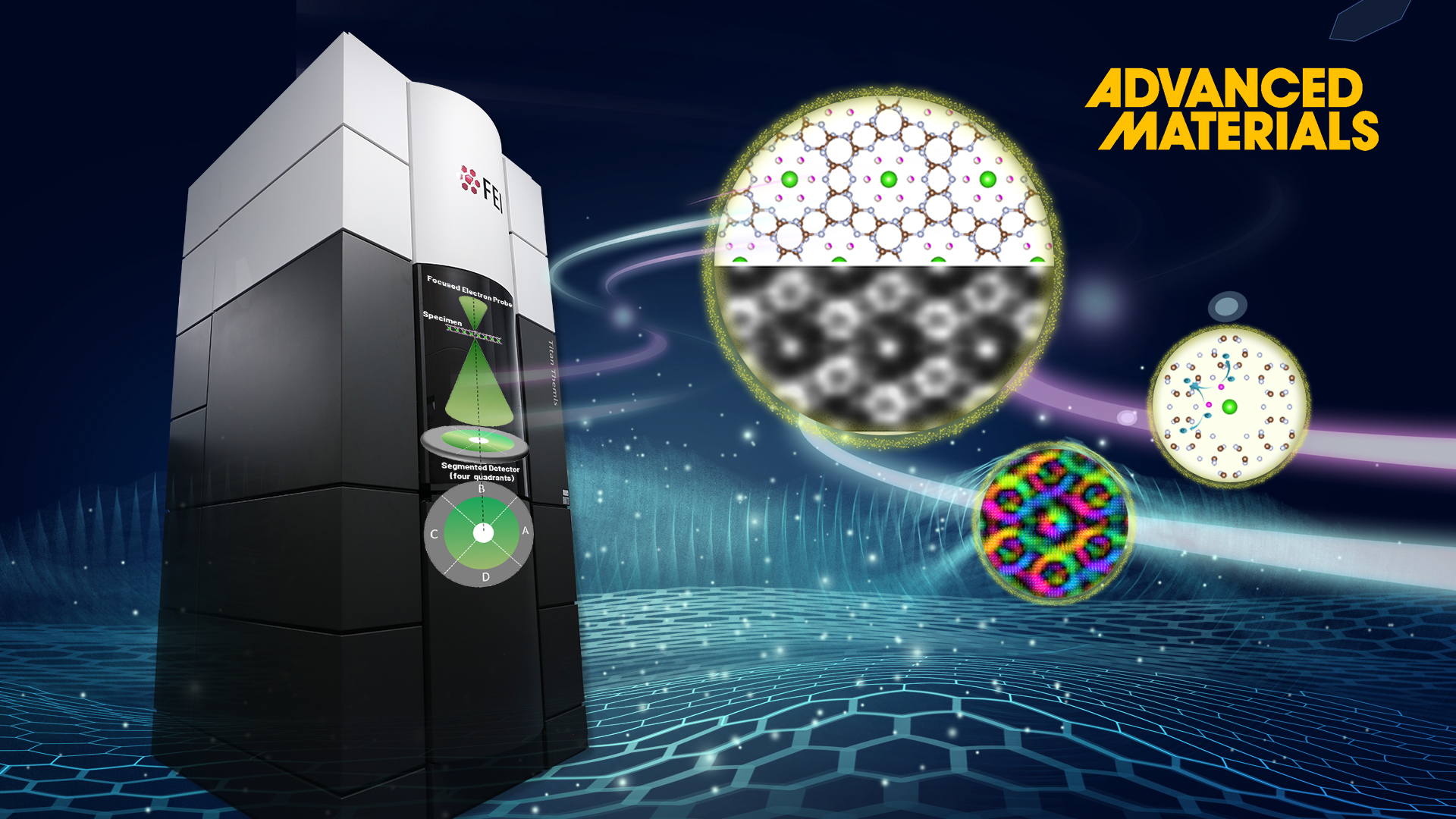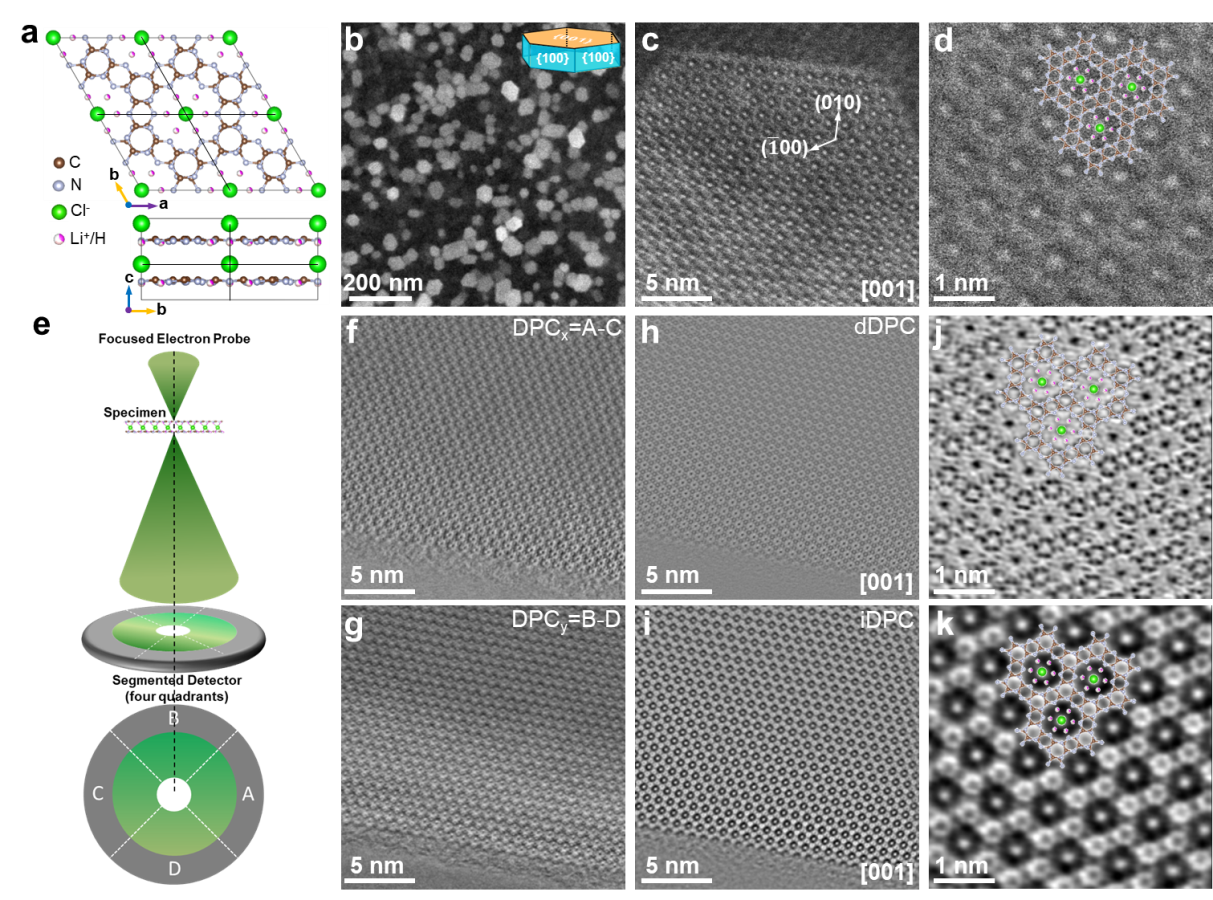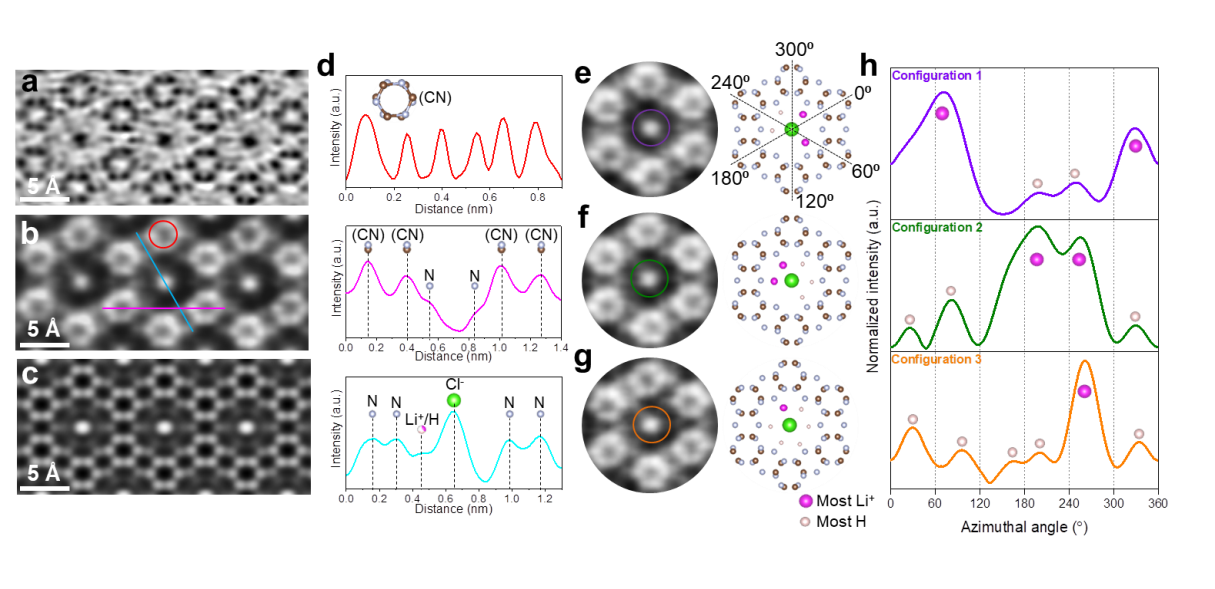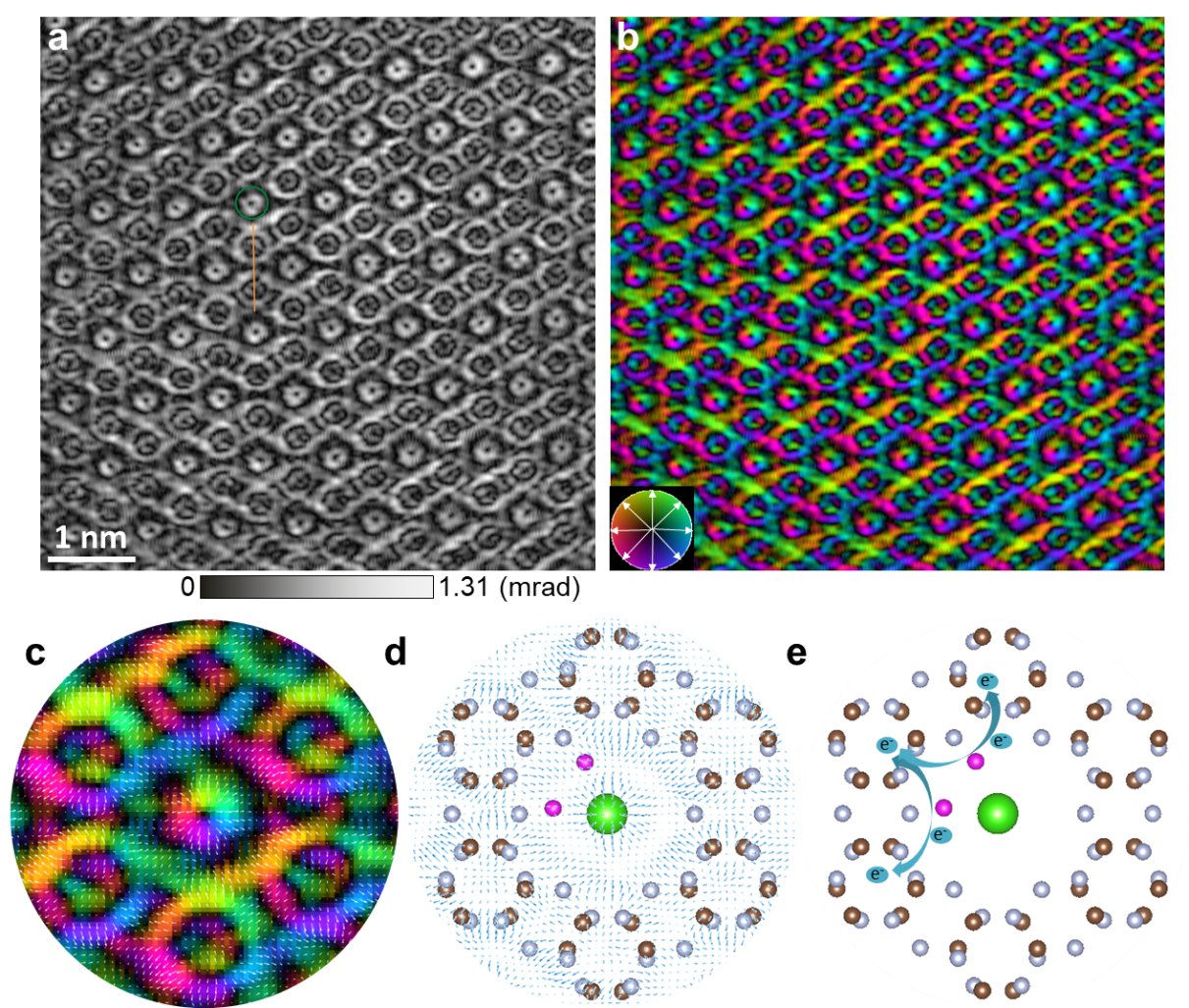Recently, the group led by Chair Professor Jiaqing He from the Department of Physics at the Southern University of Science and Technology (SUSTech) has reported the latest progress on aberration-corrected transmission electron microscope (TEM) imaging for beam-sensitive materials at a low-dose. Their work, entitled “Direct Atomic-Scale Structure and Electric Field Imaging of Triazine-Based Crystalline Carbon Nitride,” was published in the high-impact academic journal Advanced Materials.

TEM imaging technique is a powerful tool for resolving the morphology and structure of materials. With the equipment of aberration-corrector, TEM has achieved detailed structural analysis at atomic-scale and even molecular-level. Conjugated carbon nitride, as an emerging semiconductor photocatalyst, is mainly constituted by C, N, and H elements, with Van der Waals layered structure. As the intrinsic structure of carbon nitrides is easily affected by high-energy electron beams, conventional TEM imaging techniques are hard to clearly determine their atomic structures, thus limiting an in-depth exploration of the photocatalysis mechanism.

Figure 1. Atomic structure of triazine-based crystalline carbon nitride revealed by DPC-STEM technique at low-dose
To obtain the intrinsic structure of carbon nitride materials, Prof. Jiaqing He’s group has employed an emerging imaging technique, differential phase contrast-scanning transmission electron microscope (DPC-STEM), to elucidate the local structure and internal electric field of triazine-based crystalline carbon nitride (incorporated with Li+ and Cl– ions) at atomic-scale under low electron dose. The results have provided a fundamental understanding of the photocatalysis mechanism with this material.
With the same electron dose, the DPC-STEM technique, compared to the conventional ADF-STEM technique, has achieved high-resolution and high signal-to-noise imaging for triazine-based crystalline carbon nitride with enhanced contrast of light elements. Low-dose DPC-STEM resolved the honeycomb-like channel structure and intercalated Cl anions of this material.
Further analysis of local structures indicated that there are three configurations for the lightest elements Li and H, within framework cavities of triazine-based crystalline carbon nitride. With experimental and simulated DPC-STEM images, the location of Li and H atoms was clearly determined. The combined analysis of Li/H configuration determined by DPC-STEM imaging and DFT calculation emphasizes the crucial role of Li/H configuration in triazine-based crystalline carbon nitride for clarifying the electronic structure that is strongly responsible for photoabsorption.

Figure 2. Configuration of light atoms in triazine-based crystalline carbon nitride
Moreover, the atomic electric field strength and vector mappings of triazine-based carbon nitride crystal were calculated from four segmented-detector DPC images. These obtained mappings demonstrate a sharp electric field of Cl anions within the framework cavities of crystal and a localized, circle-shaped electric field of triazine units.
The coupling electric field between Li ions and adjacent atoms has also been revealed. DFT calculations confirmed the ionic bond between Li and adjacent N. The formation of this built-in electric field between Li and surrounding N not only extends the conjugated systems, but also could constitute an additional delivery path of charge carriers between adjacent triazine units. It could facilitate the migration of photogenerated electrons in corrugated layers of triazine-based carbon nitride.
The quantitative comparison between experimental and simulated electric field strength maps further verified the reliability of DPC-STEM observation on the atomic electric field and the presence of intercalated Li-ions between triazine rings of carbon nitride crystals.

Figure 3. Atomic electric field maps of triazine-based crystalline carbon nitride
This work has unambiguously revealed the atomic structures of triazine-based crystalline carbon nitride and also explored the relationship between local structures and its property at the atomic-scale. These results facilitate the comprehension of local atomic configuration and internal electric field of triazine-based carbon nitride, thereby leading to a deeper understanding of the photocatalytic mechanism. Furthermore, this study has developed the DPC-STEM technique for investigating atomic structures of conjugated carbon nitride polymers.
Dr. Wu Wang, a postdoctoral fellow at SUSTech, is the first author of this paper. Prof. Limin Huang and Dr. Zongzhao Sun from the Department of Chemistry at SUSTech and Dr. Xiaoke Mu at Karlsruhe Institute of Technology are the co-authors. Jiaqing He, Chair Professor from the Department of Physics at SUSTech, is the corresponding author of this work, with SUSTech as the correspondent unit.
This work was supported by the National Natural Science Foundation of China, Leading Talents of Guangdong Province Program, Guangdong Provincial Key Laboratory of Energy Materials for Electric Power, Guangdong Provincial Key Laboratory of Catalysis, Shenzhen Clean Energy Research Institute, Science and Technology Innovation Committee Foundation of Shenzhen, High Level of Special Funds, and the Core Research Facilities at SUSTech.
Paper link: https://doi.org/10.1002/adma.202106359
Proofread ByAdrian Cremin, Yingying XIA
Photo By